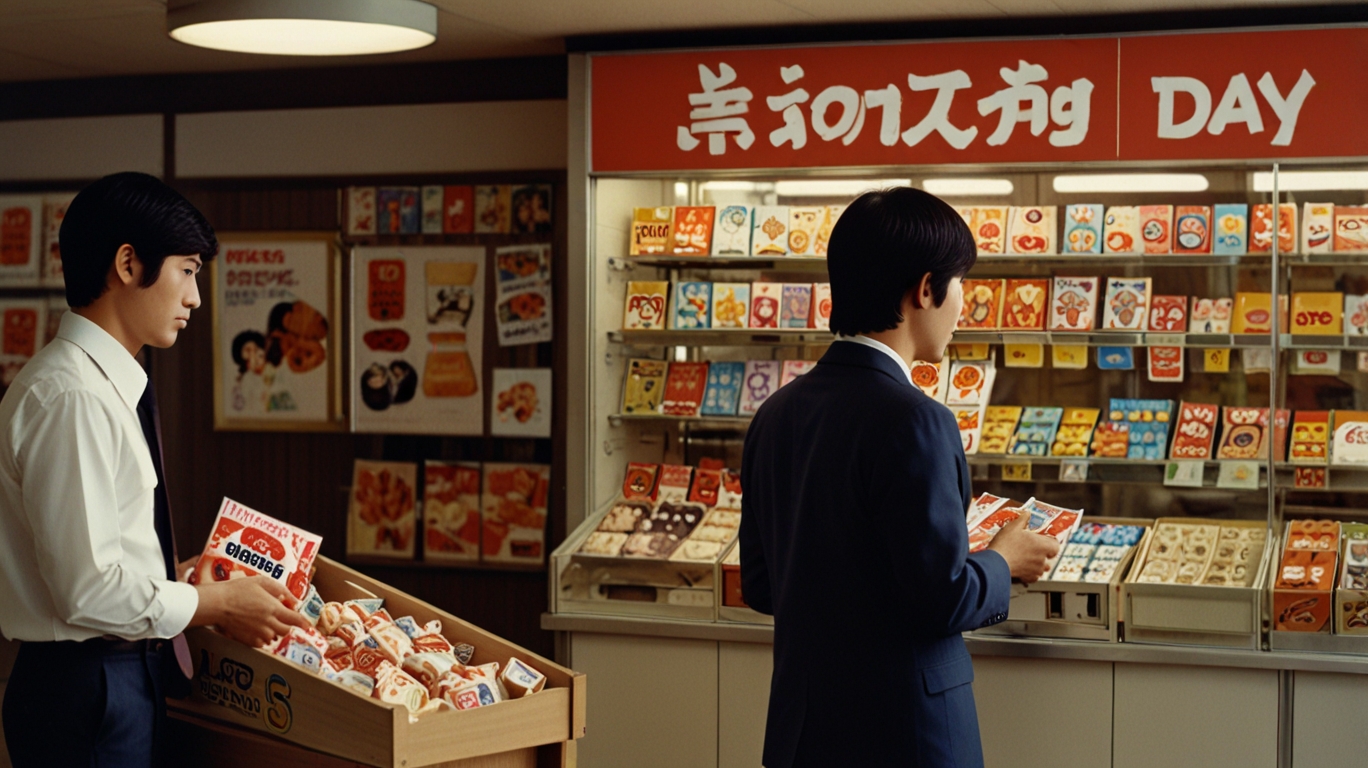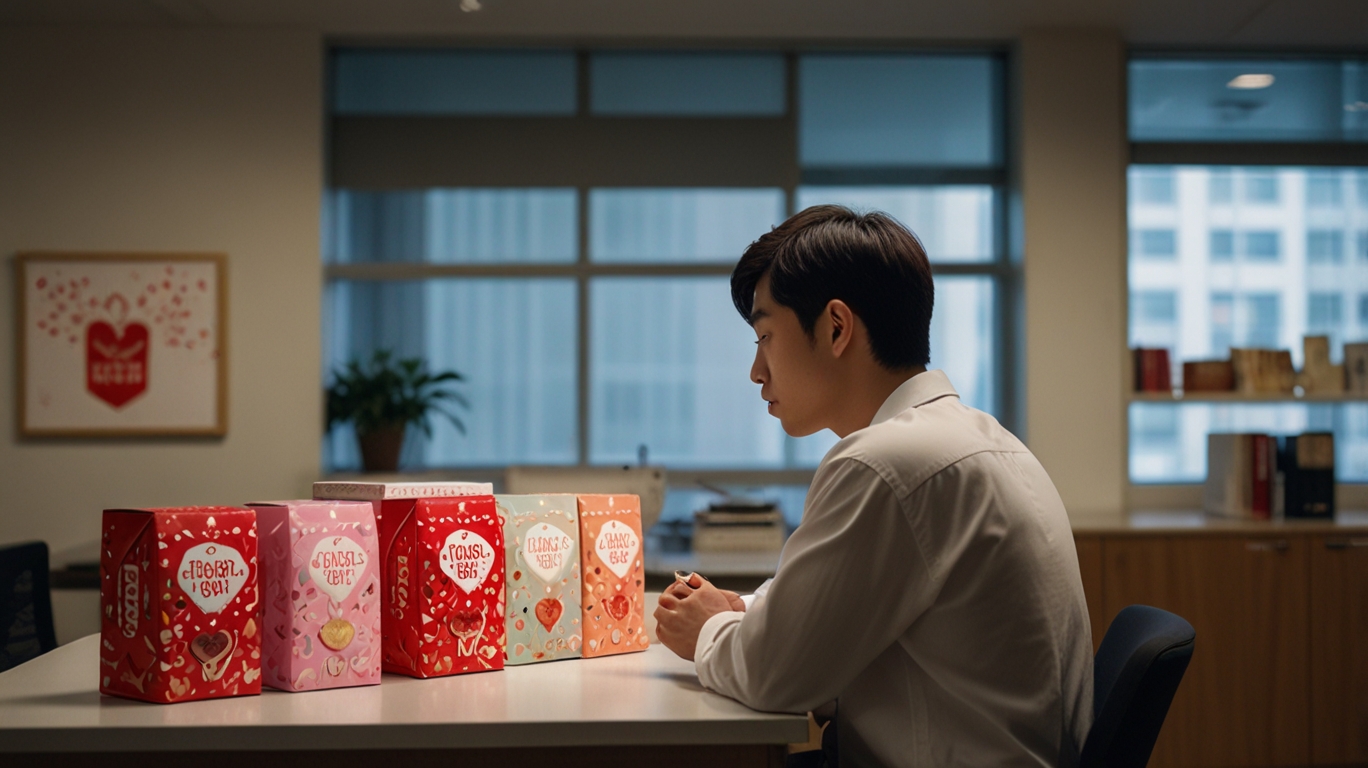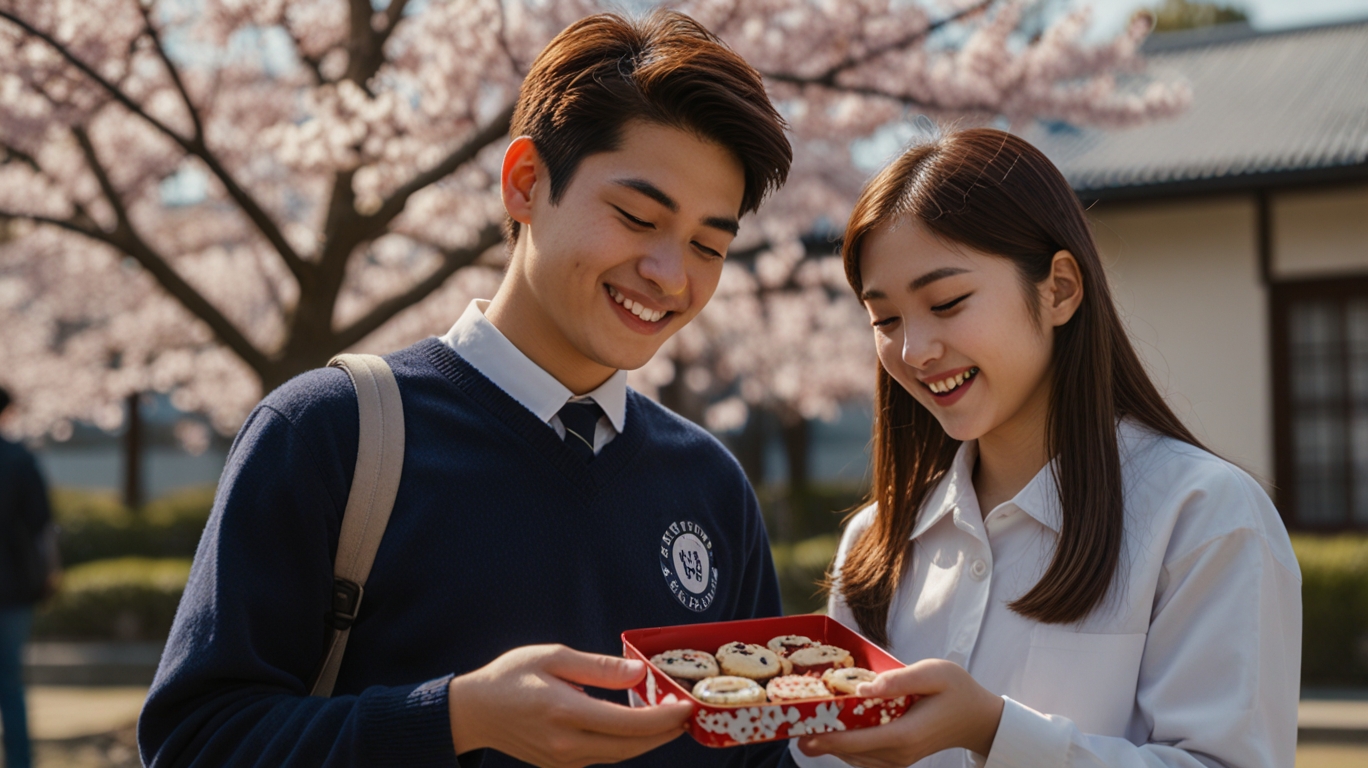How Japan Celebrates Love Twice: The Meaning Behind White Day


When it comes to romantic customs, few countries embrace love and affection quite as uniquely as Japan. While Valentine’s Day is widely observed across the globe, often marked by the exchange of chocolates, flowers, and heartfelt notes, Japan sets itself apart by celebrating not just once, but twice. In addition to Valentine’s Day on February 14, there is a second, equally meaningful holiday exactly one month later — White Day, celebrated on March 14.
Unlike in many Western countries where Valentine’s Day is a mutual exchange of affection, in Japan, it traditionally begins with women giving chocolates and gifts to the men in their lives — whether romantic partners, male friends, or even coworkers. But the story doesn’t end there. One month later, on White Day, it’s the men’s turn to respond, expressing their gratitude and affection by gifting sweets or thoughtful presents in return.
This two-part celebration adds depth and reciprocity to the tradition of giving, transforming Valentine’s Day into a dialogue of love rather than a one-sided gesture. But where did this unique tradition originate? And how has it evolved in contemporary Japanese society?
The Origin of White Day: A Marketing Concept Turned Cultural Tradition

White Day was first celebrated in Japan in 1978, introduced by the National Confectionery Industry Association. Initially, it was conceptualized as a day for men to reciprocate the gifts they received on Valentine’s Day. In Japan, Valentine’s Day is a one-way affair — women give chocolates to men, ranging from romantic partners to coworkers and family members. This left a gap in mutual romantic exchange.
To promote equality in gift-giving (and stimulate confectionery sales), White Day was born. Held exactly one month later, on March 14, White Day is when men return the gesture — offering gifts to the women who gave them chocolates or tokens of affection. Over the years, White Day has become more than a commercial invention. It’s a socially expected gesture of gratitude, romantic interest, or friendship.
The Gift-Giving Rules: More Than Just White Chocolate

On White Day, which is celebrated exactly one month after Valentine’s Day on March 14, the spotlight shifts to the men, who are expected to return the affection they received. But this isn’t just a simple exchange — in Japanese culture, the return gift holds deep meaning and is bound by both tradition and unspoken social expectations.
Historically, white chocolate emerged as the iconic gift for White Day, which is how the day got its name. When the holiday was first introduced in Japan in the late 1970s by confectionery companies, white chocolate was marketed as the ideal return gift — distinct from the milk or dark chocolate typically given by women on Valentine’s Day. Over the years, however, the types of gifts exchanged have diversified significantly. Today, men may give not only white chocolate but also cookies, marshmallows, candies, floral arrangements, plush toys, scarves, accessories, handkerchiefs, or even more luxurious items such as handbags or jewelry, depending on the nature of the relationship.
One of the most fascinating aspects of White Day is the concept of sanbai gaeshi, or “triple return.” This unwritten rule suggests that the man should give back a gift that is approximately three times the value of what he received on Valentine’s Day. For example, if a woman gives a man a box of chocolates worth 1,000 yen, he is expected to respond with something valued at 3,000 yen. But this concept isn’t just about monetary value. The return gift is meant to reflect greater thoughtfulness and emotional significance. It’s a form of social reciprocity that acknowledges the effort and meaning behind the original gift — and demonstrates an even greater level of appreciation in return.
This tradition reflects broader themes in Japanese gift-giving culture, where the kokoro (heart, or intention) behind a gift often matters more than the item itself. White Day serves not only as a romantic gesture but also as a culturally rich practice that emphasizes sincerity, gratitude, and social balance within personal relationships.
Romantic vs. Obligation: Understanding Giri-choco and Honmei-choco

Understanding White Day in Japan begins with revisiting the unique cultural practices of Valentine’s Day, which differs significantly from the Western version. In Japan, Valentine’s Day is traditionally when women give chocolates to men, and the act is divided into two distinct categories based on the nature of the relationship.
Giri-choco (義理チョコ), or “obligation chocolate,” is given to male coworkers, classmates, bosses, or acquaintances as a gesture of politeness and social duty rather than affection. It reflects the importance of maintaining harmony and good relationships in the workplace or social circles. There is no romantic intent behind giri-choco; rather, it’s a courteous acknowledgment of one’s presence or support.
Honmei-choco (本命チョコ), or “true feeling chocolate,” on the other hand, is reserved for someone the giver has genuine romantic feelings for — typically a boyfriend, husband, or a man the woman hopes to date. These chocolates are often homemade or of higher quality, symbolizing deeper emotional investment and sincerity. The distinction between giri-choco and honmei-choco is not merely semantic; it carries significant social weight and expectation.
When White Day arrives exactly one month later on March 14, the dynamic reverses. It is now the man’s turn to respond to the chocolate he received. The nature of the return gift is shaped heavily by the type of chocolate he was given. If a man received giri-choco, the expected return is usually modest and impersonal — perhaps a pack of individually wrapped cookies, a bag of marshmallows, or simple candy, meant to politely close the exchange without implying deeper emotion.
However, if a man received honmei-choco, the return gift on White Day takes on a more serious tone. It is expected to be thoughtful, often more expensive, and romantically charged — such as jewelry, perfume, luxury chocolates, or intimate gestures like a handwritten letter. Some men even use White Day as an opportunity to confess their feelings in return, or to strengthen an existing romantic bond.
There’s even a popular saying in Japan that the White Day gift should be “sanbai gaeshi” — three times the value of the Valentine’s Day gift — especially if it was honmei-choco. This custom underscores the seriousness with which reciprocation is viewed.
In this way, White Day serves not just as a day of return gifts, but as a subtle yet powerful communication tool. It’s a moment when romantic interest can be confirmed, gently declined, or even taken to the next level — often without the need for spoken words. Through the exchange of carefully chosen gifts, Japanese couples and hopeful lovers navigate the quiet intricacies of love, obligation, and unspoken emotion.
White Day in Modern Japan: Evolving Traditions and Personal Meaning

In recent years, White Day has undergone a notable transformation, reflecting the broader shifts occurring within Japanese society. As gender roles continue to evolve and younger generations become increasingly aware of and critical toward traditional expectations, the way White Day is celebrated has started to change. No longer viewed strictly as a day for men to return gifts received on Valentine’s Day, it is now being reinterpreted as a mutual celebration of affection and appreciation.
Among young couples, it’s becoming more common to exchange gifts on both Valentine’s Day and White Day, reflecting a more balanced and egalitarian view of relationships. For some, this means thoughtful, reciprocal gestures like sharing homemade sweets, writing heartfelt notes, or planning experiences together. Others, however, may choose to opt out of material gift-giving entirely, instead favoring simpler, more personal expressions of love, such as spending quality time together or enjoying a quiet meal. These evolving customs speak to a broader trend in Japanese society — one that emphasizes emotional authenticity over social obligation.
Despite these changes, White Day continues to hold a strong cultural presence across Japan. In schools, students may still feel the excitement of giving or receiving “giri choco” (obligatory chocolates) and later returning the favor with candies, cookies, or small trinkets. In workplaces, colleagues often exchange gifts as a polite gesture to maintain harmony and express gratitude. Meanwhile, at home, families might use the occasion to strengthen bonds by preparing sweet treats or celebrating together.
Commercially, White Day remains a major event on the Japanese retail calendar. In the weeks leading up to March 14th, department stores across the country transform with elaborate gift displays, often organized by color, brand, or type of confectionery. Cafes and patisseries release themed desserts, featuring pastel hues, heart shapes, and seasonal flavors like sakura. Well-known brands, both local and international, take the opportunity to launch limited-edition products designed specifically for the White Day market — from luxurious boxes of chocolate to high-end accessories and beauty items.
Ultimately, White Day is more than just a commercial or romantic occasion. It remains a cultural symbol of social balance and emotional nuance, emphasizing values like reciprocity, modesty, and thoughtfulness. As traditions shift and individuals personalize how they express affection, White Day continues to serve as a gentle reminder of Japan’s enduring emphasis on harmony in relationships — whether among lovers, friends, classmates, or colleagues.
Celebrating White Day as a Visitor or Foreigner in Japan

If you’re visiting Japan in March, you’ll likely see White Day promotions and special gift packaging in shops and bakeries. Tourists and expats can participate in the fun, too — especially if they’re part of a local community, host family, or school.
To take part respectfully, consider the cultural nuance of gift-giving. If someone gave you chocolates on Valentine’s Day, a small thoughtful item in return on White Day shows your appreciation. Even if you’re not romantically involved, acknowledging the gesture matters more than the cost of the gift.
It’s a great way to engage with Japanese customs, practice empathy through gift-giving, and experience firsthand the unique dual celebration of love.
Conclusion: The Beauty of Mutual Affection
Japan’s White Day adds a unique and culturally rich layer of depth to the global celebration of love. Celebrated on March 14th, exactly one month after Valentine’s Day, it offers a meaningful opportunity for those who received gifts or affection on February 14th to return the gesture. In contrast to many Western traditions where Valentine’s Day often sees mutual gift-giving, Japan’s approach divides the occasion into two distinct yet complementary parts: Valentine’s Day, when women typically give chocolates or tokens of affection to men, and White Day, when men are expected to reciprocate. This separation transforms a one-sided romantic act into a shared experience that honors both giving and receiving.
Rather than being simply about sweets and romance, White Day fosters a culture where emotions are acknowledged, valued, and reciprocated. Whether it’s a box of white chocolate, a carefully chosen present, a heartfelt handwritten letter, or a quiet expression of gratitude, each gesture on White Day reinforces the idea that love should not be taken for granted. It’s a thoughtful reminder that affection deserves recognition, and that relationships thrive on mutual care and communication.
White Day is more than just a commercial or cultural event — it’s a symbolic moment of reflection on the nature of relationships. In a society like Japan, where emotional expression is often subtle and non-verbal, White Day provides a structured yet sincere space to express appreciation, deepen bonds, and celebrate connection. It underscores the importance of balance, of giving as much as we receive, and of showing gratitude not only through grand romantic declarations, but also through quiet, meaningful actions.
RELATED POSTS
No Results Found
The page you requested could not be found. Try refining your search, or use the navigation above to locate the post.